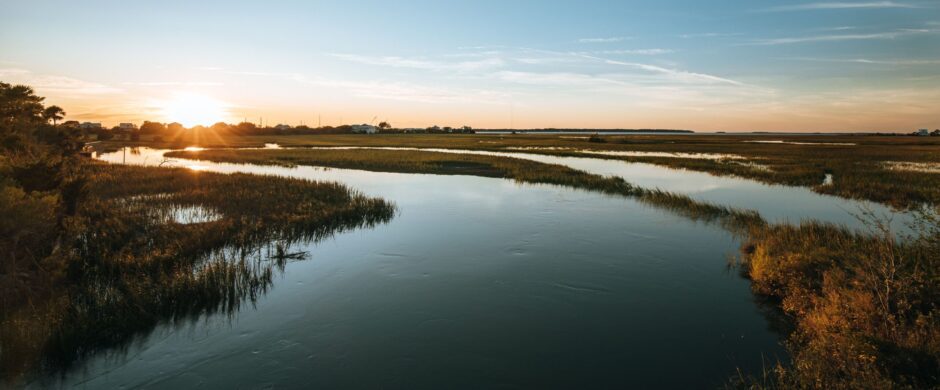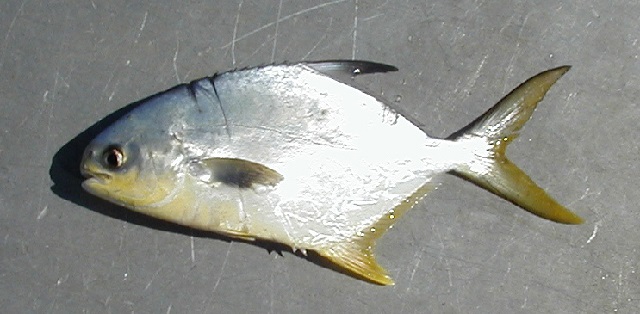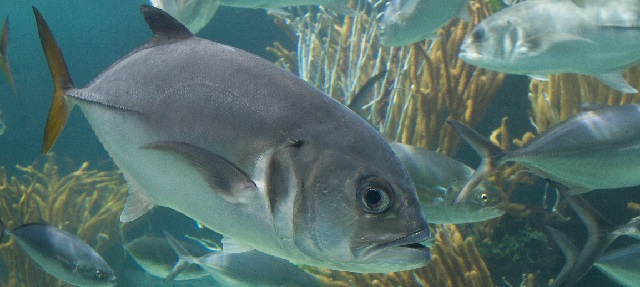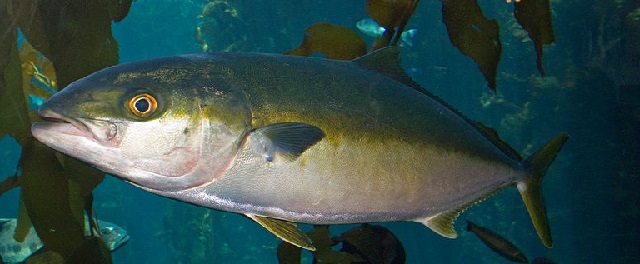Carangidae is a family of fish which includes the jacks, pompanos, jack mackerels, and scads. These fish are found all over the globe in the Atlantic, Indian and Pacific Oceans. Most of the species are fast-swimming predatory fishes that hunt in the waters above reefs and in the open sea, while some will dig in the sea floor for invertebrates.
Jacks & Pompano in the Beaufort, SC Area
Jacks and pompano are popular fish to target in this area during the warmer months. From late spring through fall, you will be able to find good numbers of fish here. African pompano are big fish that are available in deeper waters. Jack Crevalle can be found all over the place. It is a very popular inshore fish. Pompano run along the coastline of the barrier islands in the spring. They head back down south in the fall, so you get another shot at them as water temperatures cool back down. Amberjack are common around the reefs and wrecks in nearshore and offshore waters.
Take a look below to learn about the different types of jacks and pompano.
Amberjack
The Amberjack consists of 3 different types of fish from the Carangidae family (genus Seriola), which includes the jacks and the pompanos. The 3 species are known as the greater amberjack, lesser amberjack and the banded rudderfish. Amberjack are found mostly offshore and nearshore around reefs, wrecks and debris.
Crevalle Jack
Jack Crevalle are a very popular species for inshore anglers, although, they are commonly found offshore as well. These fish are extremely powerful and capable of making long runs, especially if you are using light tackle. Their average size ranges from 2 to 5 pounds, but in most areas fish up to 10 pounds are plentiful. Some people eat these fish, but most people would rate them as very poor-tasting.
Learn More About Jack Crevalle
Florida Pompano
The Florida pompano is a very popular migratory fish that is most commonly caught in Florida, but you can find these fish along parts of the Atlantic Coast and along the Gulf coast during the summer. They migrate back south during the fall and winter. Anglers love to fish for these fish because they taste excellent. Some people feel that these fish are some of the tastiest fish in the ocean, so when the pompano are running, anglers will be at the beaches.
Learn More About Florida Pompano
Permit
The permit is a game fish of the western Atlantic ocean belonging to the Carangidae family. Permits can be distinguished by their elongated dorsal fins and anal fin. The permit tails are deeply forked and their bodies are compressed laterally, making the fish tall and thin when viewed from the front. In North America, they are found on the Atlantic coast from Massachusetts to the Florida Keys and throughout most of the Caribbean Islands.
African Pompano
In North America, African Pompano are usually found on the lower half of the Atlantic coast, in the Florida Keys and in some parts of the Gulf of Mexico. Young fish are often found in shallow reefs, while the adults are found around deep wrecks. African pompano feed on crustaceans, small crabs and small bait fish. These fish are considered a good-eating fish.
Learn More About African Pompano
Almaco Jack
The Almaco jack is not a common catch among most saltwater anglers. The reason for this is that almaco jacks tend to spend most of their time in deep, open water on the outer slopes of reefs. You won’t find these fish on the reefs or nearshore where most anglers typically fish. Offshore anglers that fish near buoys, reefs and wrecks may run into an occasional almaco jack. Trolling with deep-running plugs or bottom fishing with cut baits is an effective way to catch almaco jacks. In North America, you will find them in Southern California and along the Atlantic Coast.
Banded Rudderfish
Banded rudderfish are found inshore, offshore and at times, they can be found along the surf. Some of the better spots to fish are hard bottom, around structure, in deep water channels and around buoys.
Banded rudderfish are not nearly as big as amberjack, so you aren’t going to be using baits as big as you would when you are targeting some of those bigger amberjack. Banded rudderfish average 1 to 3 pounds, but fish up to 5 pounds are not uncommon.
Learn More About Banded Rudderfish
Blue Runner
Blue runner are very fast and aggressive fish known for traveling in schools along the coastlines of the Atlantic Ocean. They are considered a game fish, but many anglers use blue runner as bait. Most of these bait fish will be 10 to 12 inches, which is a perfect size for catching bigger fish.
California Yellowtail
The California Yellowtail is a species of ray-finned fish of the family Carangidae. The California Yellowtail is carnivorous and feeds on a variety of fish such as mackerel, sardines, anchovies, crab and squid. California Yellowtail are typically found in schools feeding at the surface of the water, as well as deeper down in the water column. The California Yellowtail are often confused with some tuna species such as Yellowfin, Bluefin and Skipjack tuna.
Learn More About California Yellowtail
Palometa
Palometa are often found in bays, along sandy beaches and occasionally over reefs. Found mostly in south Florida, Palometa typically average under one pound with fish in the 2 to 3 pound range considered trophy fish. These fish are not very common among saltwater anglers, but if you do have a chance to fish for them, they can be a lot of fun on light tackle.




















